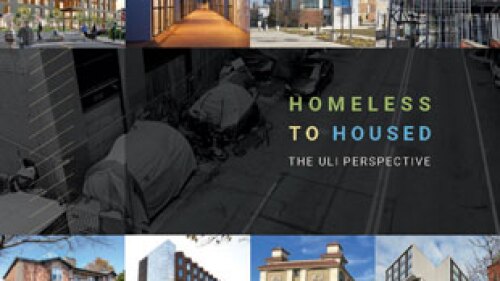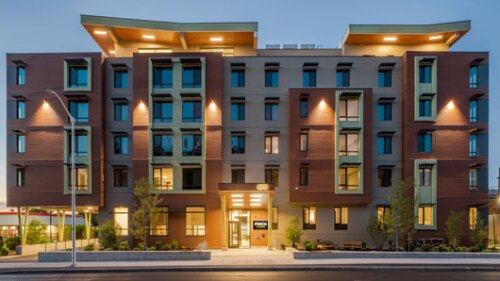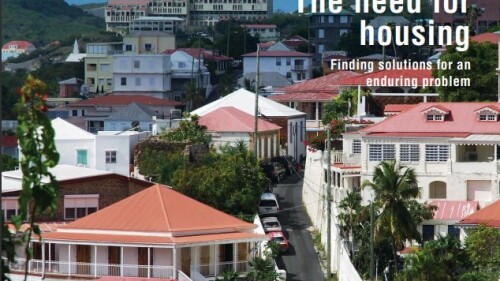Mark Rose is CEO of Avison Young, one of ULI’s sponsors for the 2023 ULI Spring Meeting.
Our cities are in a time of transition.
Changes in work patterns, the rise of hybrid and remote working, new space usage trends, and the ever-increasing effects of e-commerce on physical brick-and-mortar retail are driving the need for adaptation and creative utilization.
Uncovering opportunities begins with understanding the major drivers of change happening in our cities to help us all work toward a strategic plan to revitalize and renew.
Mobility Patterns: U.S. and Canadian Office Markets
What are the numbers telling us about the current state of our downtowns? Insights from Avison Young mobility data over the last few years show cities benefiting from a surge in leisure and social activities, while remaining cautious on office and general weekday returns.
By studying specific mobility patterns, we begin to see the nuanced challenges and opportunities for real estate being created by new foot traffic and utilization patterns. For retailers and businesses dependent on commuter foot traffic, new patterns can inform optimal hours, staffing, and space planning considerations. For mixed-use districts, corridors, and neighborhoods, consumer decisions are prioritizing places that offer social value—including an interest in culture and meaningful experiences that are worth the travel.
Desires are changing, and with it the need for cities to adapt
Owners looking to maximize the impact and value of their properties are facing new expectations and market conditions, which has many looking at the viability of each unique property’s potential for adaptive use.
Avison Young data highlights locations around the globe ripe for reuse, with numbers in the hundreds to thousands based on building age and overall floorplate size. In older cities like London, the buildings available for potential creative reuse reach close to 2000, but even cities like Los Angeles have more than 100 opportunities viable for consideration.
What role can adaptive reuse of buildings like these have toward increased social value in our cities, engagement with the private and public sectors, and solving other critical challenges like our cities’ deep need for affordable housing solutions?
To dive deeper, I’ve asked my Avison Young colleagues for their perspectives:
Exploring social value in our cities with EMEA ESG social value director Dr. Eime Tobari
Mark Rose: Eime, how would you define added social value?
Eime Tobari: It’s work or efforts that actively support the greater good of a community. Social value can be created in a variety of ways, such as creating more employment opportunities, supporting local businesses, protecting the environment, or increasing access to critical social good services like education or healthcare.
Rose: How should we position the social value of a city? How can it be quantified?
Tobari: Social value of a city can be measured as alignment with local needs, not as an absolute value. Drivers to create social value will be different between various actors (e.g., public sector, developers, investors, the broader community, etc.), but a shared value approach enables them to work together to co-create a vision and find solutions that could benefit all stakeholders.
Rose: What barriers to access make this not such a simple approach?
Tobari: Public policy, siloes within planning authorities, general lack of awareness of the role social value of real estate plays, myths over cost, and lack of strategic or holistic approaches are just a few that immediately come to mind.
Rose: Through these challenges, what about current climates right now makes it notably worthwhile to push through?
Tobari: The topic of creating around social value is becoming increasingly important given the current economic climate. The public is more concerned about where money goes. Reputations are on the line, and communities are watching very closely right now if the dollars are wisely spent to address their needs and to improve quality of life.
Rose: Can social value from a conversion or creative adaptive reuse be measured toward goals like this?
Tobari: Yes, it could, although it’ll depend on the local context. For example, if a centrally located and under-utilized office building is converted to create residential units for young professionals and students who would appreciate its central location and are affordable for them, its social value might increase significantly. That’s worth paying attention to right now. How much the new residents create footfall and typically spend in a town center, and how they eventually contribute to the revitalization of local economy is key. As cities evolve and our way of living changes, use of our buildings should also adapt to meet current needs of these locations and make them continue to serve critical purpose.
Reuse as a path to more affordable housing with Chief Economist Dr. Nick Axford
Rose: Nick, as we think on social value of our cities, the deep need to have buildings serving critical purpose, and the rise in adaptive reuse in this time of changing needs and preferences, where do you see, across the landscape, deep opportunity to meet the moment?
Nick Axford: Most western countries are facing a housing affordability crisis, which has been worsening for years. Strong prices and rental growth have outstripped wages, particularly since the pandemic, which have worsened an already poor affordability picture. Talk about social value – this is literally about putting and keeping roofs over people’s heads. It’s also led to a rise and sharp increase in “super commuters” or those needing to travel more than 90 minutes a day due to cost-of-living issues in geographic area around their office space. This all provides tremendous opportunity if we can capitalize – to rethink current vacant or underutilized space as an opportunity to create solutions that take on these critical social issues.
Rose: Tremendous social good and, in many ways, something that should be an easy “yes” investment. What makes affordable housing notably attractive as well as an income and return profile for investors, developers, and operators?
Axford: Three things: current supply and demand, low vacancy rates, and reduced risk. The depth of demand means that absorption of new homes built for affordable rent is virtually instantaneous. Consistent supply shortage in the sector means vacancy rates that are low, with tenants staying in occupation for longer than they would in other types of property. And recent U.K. data shows that around 97 percent of rent in the social and affordable sector was successfully collected despite COVID-19 pandemic impacts. This is significantly above the average rates for offices, industrial and retail assets, which hover between a wider range of 35-85 percent. But embracing affordable housing isn’t just a savvy business move in a bear market, it’s the role it will play to enliven and support the overall goal of our cities – to provide value to the critical masses of community they serve. It will take all of us working together to get there.
The role of reuse across our private and public sectors with head of Canadian consulting Scott Pickles
Rose: Scott, as we consider evolving needs of our cities, the ever-present need to create social value for our communities and opportunities for business districts to adapt to meet today’s highest needs and best use, what are we seeing across our public and private sectors?
Scott Pickles: As with the private sector, the introduction of hybrid work environments in government has resulted in a decreased space utilization, which presents tremendous opportunity to optimize a real estate portfolio and identify underutilized properties for conversion. Notably, as you’ve shared in your conversation with Nick, Canada is using this stock surplus as an opportunity to address the housing crisis, with Ontario alone selling hundreds of surplus properties and other cities following suit. This divestiture is a direct result of assessing service needs and identifying properties that are no longer required.
Rose: What questions should owners address as they assess opportunities for re-use?
Pickles: Consider conversation starters like: how are buildings and space currently being used? Are there market opportunities or a positive impact that a conversion could address? Is there greater opportunity to reimagine what that empty parking lot could be and how it could be repurposed to increase community vibrancy and placemaking? Could municipal services be bundled with other uses to create integrated facilities? How can underutilized properties build vibrant communities, reanimate city blocks, and diversify local neighborhoods and create greater housing choice?
Rose: Across every answer and opportunity ahead, what do you see as the real value-driver for our cities to rethink and reuse right now?
Pickles: While identifying underutilized, surplus, or vacant properties and determining their full social, economic, and environmental value can seem daunting, navigating the process and managing the change will improve the spaces and places that enhance and enrich the lives of individuals, families, and communities. For me, that’s more than enough to open the conversation to what could be possible.
MARK ROSE is CEO of Avison Young.
More Resources on Reshaping Cities:







